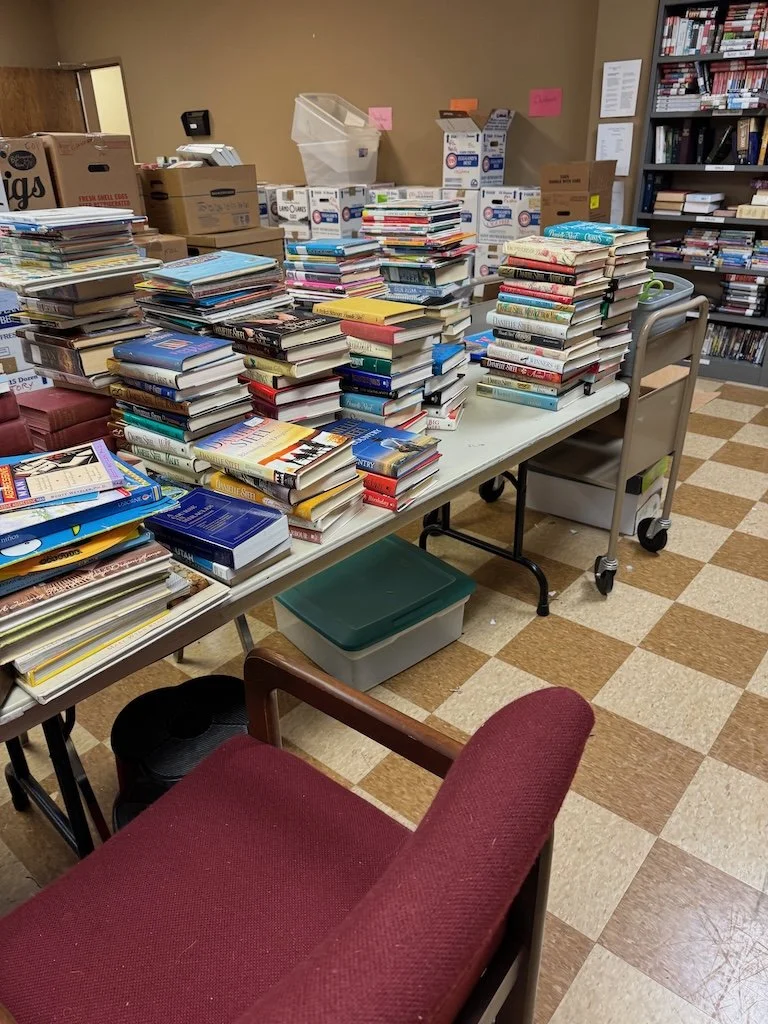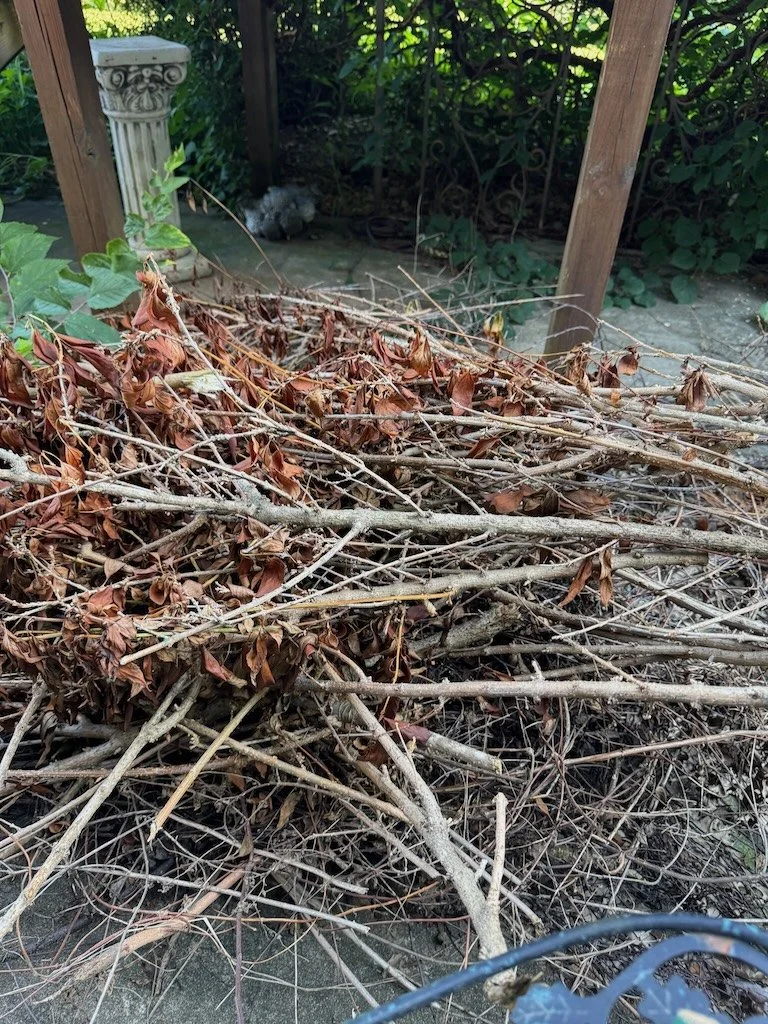Plastics Crisis: As an Individual
/We cannot eliminate micro and nano plastics from our lives. They are in the air we breathe, the water we drink, the food we eat, and the toiletries we use. They are in us – our lungs, our heart, our kidneys, or brain…everywhere. The impact on our health is something that develops over long exposure/accumulation; research studies are just now beginning to clarify their impact. It is possible to reduce our exposure, and we probably need to do what we can to stay healthy as long as possible. This post is about my initial strategy to reduce micro and nano plastic exposure for myself and my family.
Air
The air purifiers that we bought during the COVID-19 pandemic are still running in our bedroom and my office. They help with seasonal allergies and take out some of the plastics in the air.
I try to reduce time outdoors when the air quality is yellow and avoid going outside if the air quality is red. The PM2.5 (Particulate matter less than 2.5 microns) is almost always the major contributor to the air quality ‘color’ in the area where I live and it includes microplastics. It might not be counting nano-plastics effectively and there are probably some in the air; those are the plastics small enough to move through capillaries in our bodies; hopefully these smaller particles will start being monitored more effectively.
Water
I currently filter the water we drink with Brita Elite water pitchers. They get some of the plastics out of our water. My daughter and I are talking about upgrading…perhaps all the way to reverse osmosis filtration. I have a glass carafe for filtered water in the bathroom since I am always thirsty when I first get up.
We always carry stainless steel water bottles with us when we are out and about. When we leave home they contain filtered water.
On overnight trips, we are taking a filtration pitcher with us so that we can easily refill our water bottles with filtered water. If we need to buy something to drink, we strive to buy it in a can, glass, or paper container….but sometimes that is difficult. I am tempted to ask if I can buy a drink but use my refillable stainless steel container rather than a Styrofoam or plastic cup.
We try to avoid plastic water bottles completely. The plastic sluffs off microplastics – particularly if the bottle has ever been warm.
We don’t use plastic glasses at home…and don’t eat out frequently except when we travel.
Food
Micro plastics are often found in soil and can be absorbed by plants as they grow so they can be in the veggies and fruit we eat, and they accumulate in the animals that provide meat that we eat. Organic foods will have microplastics too; they might even have more plastic since organic farms sometimes use plastic sheeting to avoid the need for chemical weed control and to conserve water around the base of plants. There is not much that can be done to reduce the microplastics that are integrated into our food in this way.
Packaging is another way microplastics can be incorporated into food and there are actions that can be taken to reduce this source of microplastics.
Buy fresh fruits and vegetables unpackaged. Use reusable produce bags. Don’t store them in the bags either – particularly if the bags are a synthetic fabric.
Buy in glass rather than plastic jars and bottles. Prioritize fatty and acidic foods to buy in glass if you are on a budget. Peanut butter and olive oil are examples of fatty foods. Lemon juice, soft drinks (not a health food ever but even less healthy in plastic), spaghetti sauce, and salad dressing/vinegars are examples of acidic foods. Sometimes this is difficult since some stores only carry the commodity in plastic packaging.
Meats are almost always packaged in plastic now, so it is almost impossible to avoid. I buy some meats frozen so that the plastic is not closely touching the food and when there is a canned version (canned chicken, canned chili, canned tamales), I take that option sometimes.
Consider making some condiments from scratch (salad dressing, marinade). I already make my own marinade with basaltic vinegar and olive oil. I am going to experiment with making salad dressing so that I can forego buying it pre-made in a plastic bottle.
Avoid plastic bags of things like popcorn (I rarely use the pre-packaged microwave popcorn), pumpkin seeds, or beans. Buy them in bulk (often you can use produce bags to get them from the store to home) and load up glass or metal canisters once at home. Frequenting a store with a bulk food section will be a continuing experiment for me…the goal will be to reduce plastic containers touching food in my home.
Store leftovers in and eat from glass or ceramic or stainless steel rather than plastic. Use stainless steel or wooden utensils. My cutting board is bamboo.
Cook in stainless steel – uncoated – pans.
Don’t heat or reheat food in plastic. Glass or ceramic always.
Buy eggs in pulp paper cartons rather than Styrofoam or plastic cartons. The eggs probably don’t get much microplastic from their container, but the pulp paper is generally the superior carton, and, like all the above measures, it reduces the plastic trash/recycle load to the environment.
Toiletries
Some plastic is small enough to be absorbed through the skin. There are two sources of plastics in toiletries: packaging and ingredients.
I try to buy cosmetics in glass. Usually this is possible for moisturizers and foundation makeup. There don’t seem to be good alternatives to plastic packaging for most items like shampoo, toothpaste, lotion, lipstick, or lip balm. I have started using bar soap which usually comes in paper wrapping or a box for hand washing and in the shower.
The ingredients in many cosmetics are sometimes microplastics or contain the same chemicals as microplastics. It’s very confusing…I don’t have a good strategy yet to fully understand the risk or how to avoid the worst offenders. I do realize that fewer ingredients is generally better and that maybe some ‘make your own’ would be better (for example, a water – glycerin – essential oil mixture in a glass bottle might be a good replacement for setting spray).
Previous Plastic Crisis posts





























